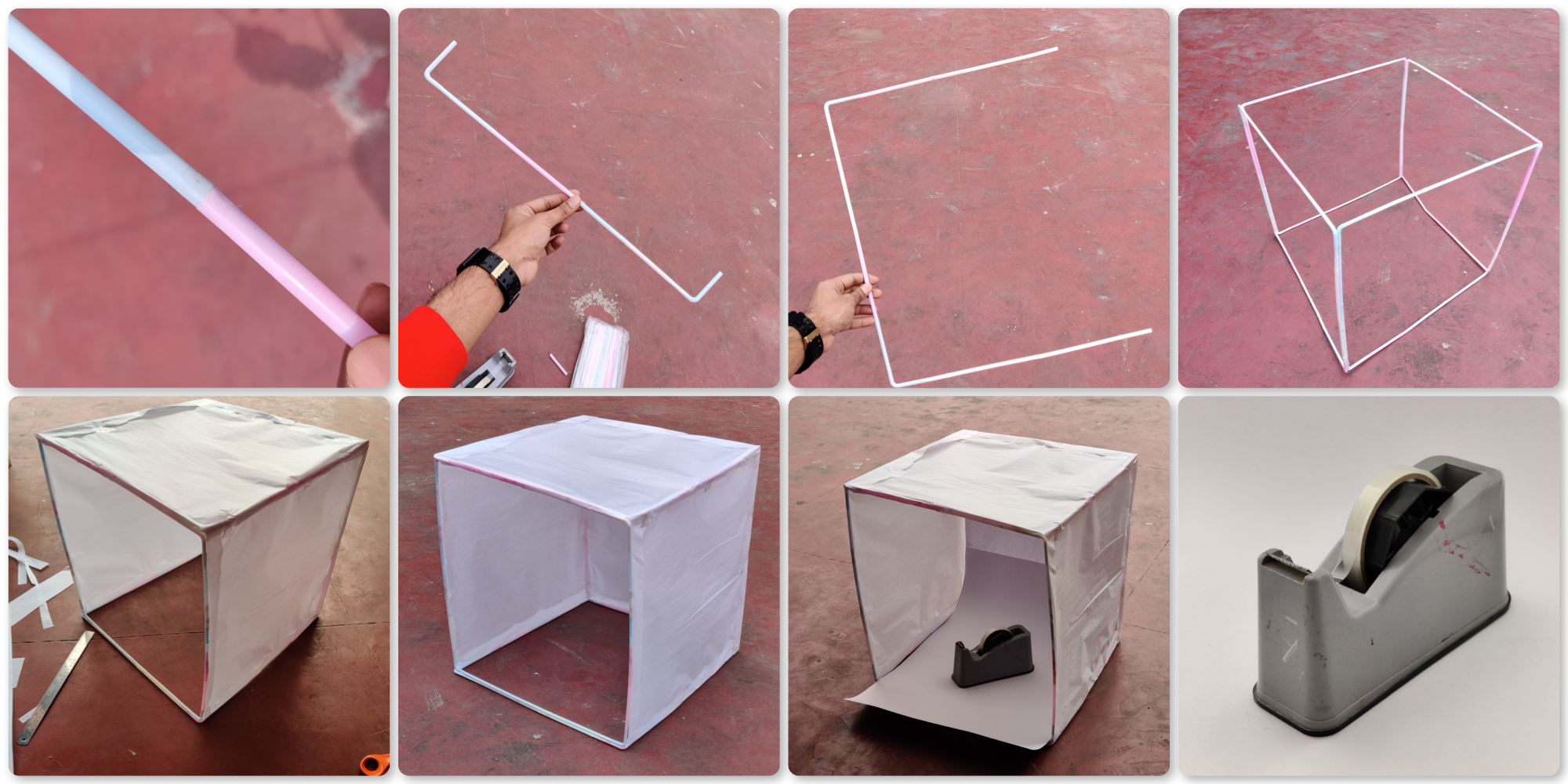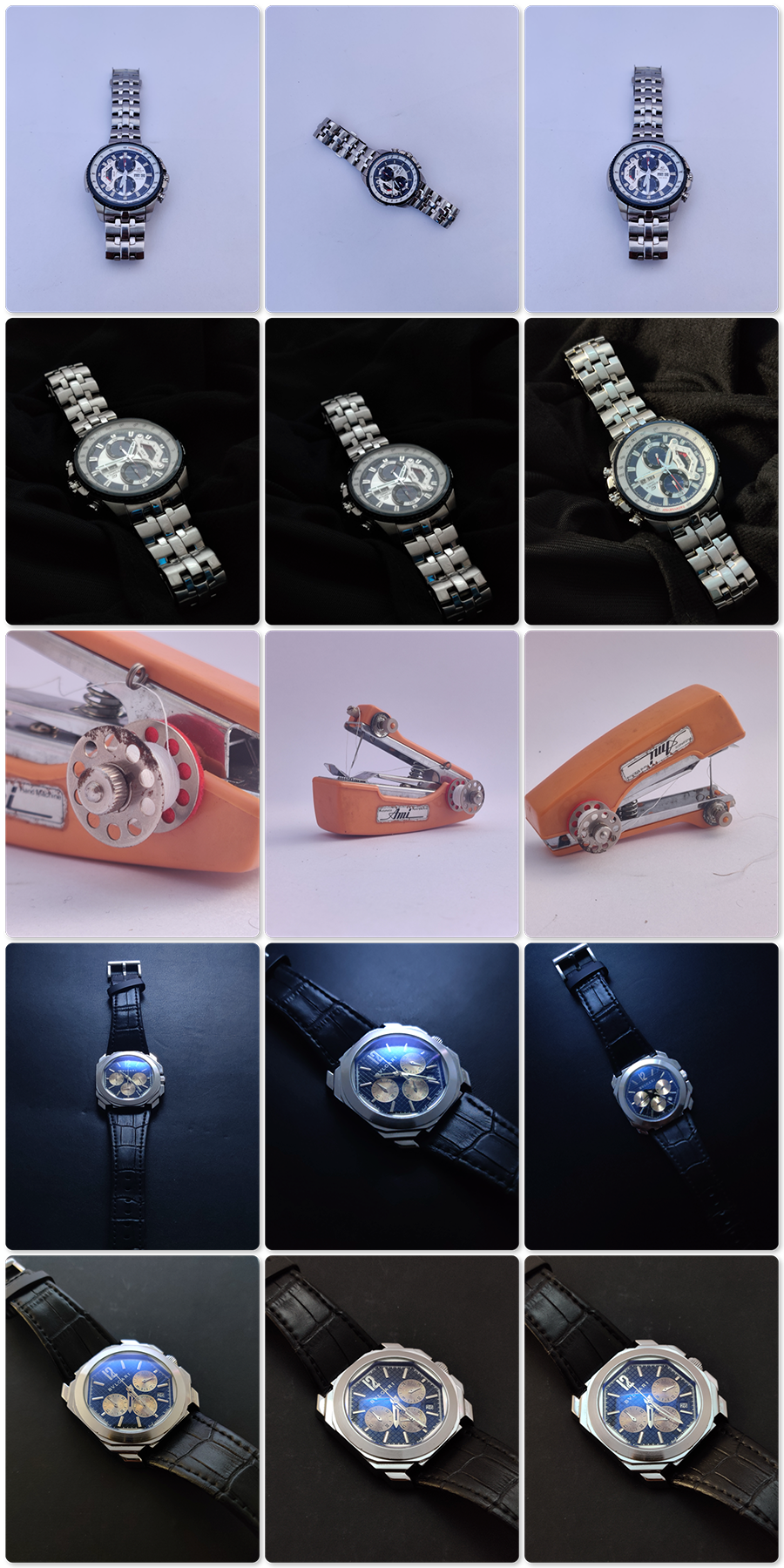%20Large.jpeg)
Watch Photography
This project was a classroom exercise during the COVID lockdown, exploring how to achieve professional-style product photography from home. I built a DIY lightbox using basic materials and experimented with lighting, framing, and object styling—all within the constraints of a home setup.
Day Light Photography
The first step in this project was to explore photography using natural light and real environments, without relying on a photo studio. The goal was to understand how time of day, direction of light, location, and shadows influence the visual tone of a product.
Before picking up the camera, I began by analyzing the product itself—a Bvlgari leather watch and an Amity timepiece. Both watches had strong design elements: metal accents, hints of gold, and black leather straps. This gave them a dual personality—rugged yet refined, masculine yet sophisticated. These qualities guided the overall aesthetic choices throughout the shoot.
To support the mood, I selected props that aligned with the brand feel: a leather jacket, a wooden box, a notebook, and even included shots of the watch being worn to bring out its functional elegance. Each composition was carefully designed to let the light, textures, and context enhance the storytelling behind the object.
%20Large.jpeg)
.jpeg)
.jpeg)
Building a Light Box at Home
Since we were working on a tight budget, buying a professional lightbox—typically costing around ₹2000 or more—wasn’t an option. So, I decided to build one myself using everyday materials. All I needed were a few translucent butter paper sheets and some structural support.
Interestingly, I didn’t have any cardboard at hand, so I improvised. I created the lightbox frame using drinking straws, taped and arranged in a cube formation. This gave the setup flexibility while keeping it lightweight and portable. The butter paper acted as a light diffuser, softening harsh shadows from regular household lamps.
This DIY approach worked surprisingly well and became a crucial part of the shoot, helping me control lighting without compromising on quality.

Lightbox Photography
Lightbox photography felt like magic—with minimal effort, I was able to achieve clean, professional-looking images. The controlled lighting and soft shadows created a highly polished, appealing effect. One of the biggest advantages was the seamless background, which ensured the focus remained entirely on the product.
At this stage, I began experimenting with light placement and intensity, playing with the direction and warmth of the light to bring out different moods and textures in the product. This phase was highly exploratory, and the results reflected a balance of control and creativity.


Final Results
This project taught me that resourcefulness is as important as tools. Even without a DSLR or studio lights, it was possible to create striking, professional-looking images by understanding the fundamentals of light and form. It also helped me appreciate how constraints can fuel creativity—and that good design (and photography) often comes from how you see, not just what you have.
.jpeg)
%20Large.jpeg)
.jpeg)
%20Large.jpeg)
%20Large.jpeg)
%20Large.jpeg)